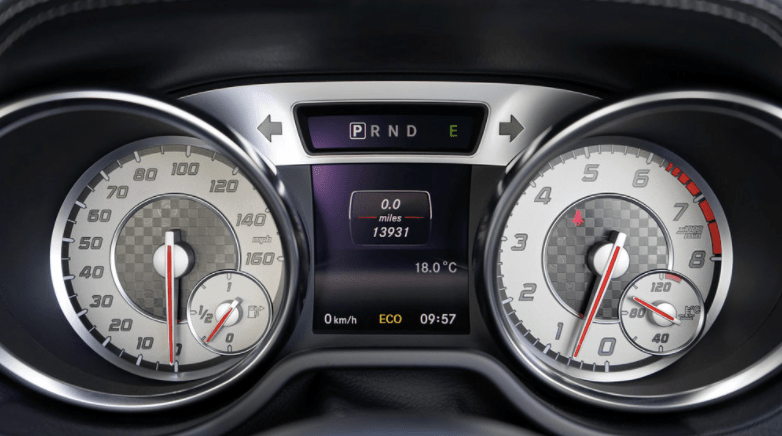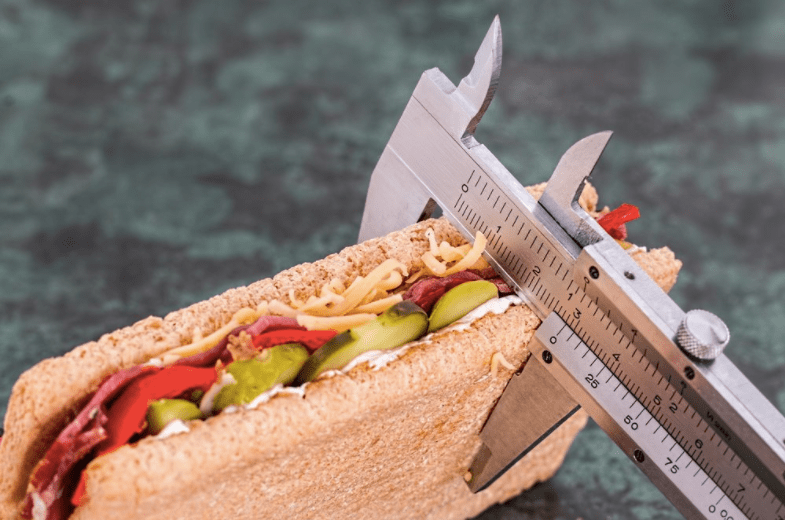BMC Part Fifteen: Metrics
(If you’re using the Canvas, you’ll love my free Business Modelling eBook, full of tips for inventing and testing ideas that will change the world)
The canvas is taking shape, and we even have a few iterations to choose from.
So how can we tell which models are stronger than others?
It turns out, we need to add a little bit more information.
For example, do we know how deep our market is?
Do we know how many purchases each customer makes in a year?
Can we identify how much it costs to bring on a new customer?
Are we able to tell how many units we need to sell in order for the model to break even?
These aren’t trivial; metrics allow us to understand exactly how desirable, feasible and viable our ideas are.
Without good metrics, we’re flying blind.
“You keep using that word…”
A metric just means “a good way of measuring something”.
You and I do this naturally in our daily lives:
- Food can be measured in calories, or by grams/percentage of fat, sugar and protein.
- When researching cars, we look at fuel consumption in litres per 100km, as well as the ANCAP safety rating.
- Michelin award the world’s best restaurants 1, 2 or 3 hats, whereas Zomato and Yelp aggregate star ratings from customers.
- We can assess our own fitness by weight, BMI, how well our jeans fit, or how we look in the mirror.
- Movies can be assessed by their IMDB, Rotten Tomatoes or Metacritic scores, and they each mean slightly different things.
These can sound petty, but they massively shape our decision making process.
A high ranking on IMDB or TripAdvisor can generate a lot of interest, and people naturally avoid any product or service rated 3 stars or below, even if they don’t quite understand why it achieved that rating.
Metrics give us points of comparison, which when combined with our Intent, allow us to make great decisions about which models are worth pursuing.
Here are some examples of metrics worth adding to your canvas.
Pick and choose the ones you like, but make sure you’ve at least had a quick think about each of them.
Let’s start with the market itself, and our Customer Segments box:
Total Market Size = How large is the market?
This is about the maximum number of people that could be interested in our product/service.
“There are 4,000 people who live and work within 500 metres of our café”
“There are 20,000 people in our city who are passionately against bottled water”
% Market Share = What proportion of the market could/have we captured?
This isn't a precise science, but you should have some sort of rationale behind your answer.
“We believe we can realistically serve 20% of that market”
“There’s a lot of competition, so we might only get 3% of those customers”
Expected Market Size = Total Market Size x % Market Share.
This tells us how many customers we can expect (often as a maximum).
If we want more, we need to grow the market, or steal customers away from our competitors.
“We can therefore expect to sell to 600 customers in the first year”
That gives us a neat framework for estimating our potential customer base.
How do we now estimate how much each customer will spend?
Here are a few for the Revenue Streams box:
# Purchases per customer = How many items does one customer need/want to buy.
This helps us calculate the maximum number of sales to expect.
“We expect that our 800 regular customers tend to come in twice a week, so that’s up to 1,600 total visits on an average week.”
Average Sale Price = How much a customer spends while they’re with you.
This tells us how lucrative each customer is, and which types of products are proving to be popular.
“Customers average $4.50 per person, which is probably one coffee each, plus a quarter of them buy a muffin”
Total expected sales = # Purchases x Average Sale Price.
This tells us how much revenue we can expect to see.
“If we expect 1,600 purchases per week, at an average of $4.50 each, then we can anticipate a revenue stream of $7,200 per week.”
Customer Lifetime Value = How much money a customer spends, grand total.
This is calculated by adding up of all their purchases they will make at your business.
“This customer will spend $18,000 on a car, plus $500 on servicing per year for the next eight years. That’s a CLV of $22,000, plus the chance that they will buy their next car from us too”
“Our tourist customers spend $40-50 but only once, whereas our local customers spend $15 per week, 30 times per year. We should be focusing on attracting more locals!”
“We make no margin on selling Nespresso machines, but we sell a lot of Pods over the next 3 years, so each customer brings in over $1,300 of sales”
To make sense of the financial benefit we get from each sale, here are some metrics for the Cost Structures box:
Contribution Margin =Revenue – Variable Costs.
This is the amount “left over” to pay for all your fixed costs, like rent and utilities.
“We sold $10,000 worth of coffees, which cost us $2,500, so we have $7,500 left to pay for all our other bills”
Contribution Margin per unit = Contribution Margin / # Units Sold.
This tells you how much each item you sell pitches in to cover your fixed costs.
“We sold 3,000 coffees, so each coffee contributed $2.50 towards our rent and bills”
Breakeven Point in units = Total Fixed Costs / Contribution Margin per unit.
This tells you how many units you need to sell in order to break even, like a hurdle.
“Our rent and bills are $6,000, so we need to sell 2,400 coffees to break even”.
Margin of Safety = (# Units Sold – Breakeven Point) in units, divided by # Units Sold.
This tells you how much breathing room you have, and how much sales can drop before you start losing money.
“We’re selling 600 coffees above Breakeven, so on 3,000 coffees that’s a 20% Margin of Safety”
Volume for Target Profit = Fixed Costs + Target Profit, divided by Contribution Margin per unit. Once you’ve decided on how much profit you’re aiming for, this tells you how many units you need to sell.
“Since we want to earn $2,000 profit, we need to sell 3,200 coffees. That means if we increase our sales by about 7%, we’ll be really happy”
Customer Relationships can make or break a business model.
Here are some metrics that help describe their behaviour:
Cost of Acquisition = How much we spend to entice a new customer.
We might spend a lot of money on a promotional campaign, but measure its effectiveness by how many new customers it brought in.
“We spent $5,000 on marketing, and it brought us 100 new customers. That’s $50 per customer, so it will only be worthwhile if those new customers become regulars”
“Our approach is to offer 50% off their first visit. We lose $15 per new customer, but it’s well worth it for the amount they will spend over the next year”
“We spend 10c per click through Facebook ads, and one in eight clicks leads to a sale. That’s just 80c per customer!”
Cost of Retention = How much we spend in order to keep customers loyal.
This might be through meetings, calls, vouchers or discounts.
“We have lunch with our major customers every three months. It costs a fair bit, but it gives us the best chance of finding new ways to work with them in the future”
“Our long term customers receive a 20% discount on future purchases. That can be up to $50 per order, but it ensures a long, loyal relationship that generates a lot of revenue over time”
“When a customer complains and threatens to close their account, our Customer Retention team are authorised to offer a gift of $200 for them to stay with us. This is much cheaper than attracting a new customer”
Churn Rate = How quickly our customers leave.
It’s easy to measure sales, but that doesn’t tell us if we’re selling to new customers, or to our regulars.
If we had 2,000 subscribers last year, and 2,000 this year, how many people in total have used our service in the last 12 months?
2,000? 4,000? 6,000?
They each mean different things for our model.
“We get about 1,500 likes per post, but these aren’t the same group each time. We have quite a high churn rate, which influences the style of post we create in a typical month”
“Our growth is low but so is our churn. Once they sign up, they’re with us for a while”
Finally, here are some metrics for forecasting our customer’s purchasing habits:
Basket Size = How much our customers buy at a time.
Like a supermarket, there’s a big difference between shoppers who use a trolley vs a handbasket.
“Our customers tend to prefer a monthly payment rather than a cheaper annual payment”
“People tend to order more than one book at a time from our website, that’s why we use algorithms to create automated recommendations”
Order Velocity = How quickly someone comes back.
Instead of simply categorising customers as “once” or “repeat”, we can gauge whether they come back twice or ten times in a year.
This is an important distinction, and it influences how a brand can prompt a repeat order.
“Most people who buy a new car don’t want to think about cars again for at least three years – that’s when we re-establish contact”
“If a user has a good experience, they tend to return to the app within 7 days. If their account is inactive for more than two months, they’ll probably never return”
Size of Wallet = How much money a customer has available to solve a particular problem.
We can experiment with premium value propositions, but if customers can’t afford them then it means nothing.
“We know our customers can afford a $20,000 car, but not a $30,000 one. That’s shaped our pricing strategy, we’ll try to push them from 21 to 24, or 25 to 28, but 32 is off the table”
“Our customers have to go to tender for anything over $5,000. That’s why we set our services at $4,999”
“Melbournians just aren’t ready to pay more than $5 for a latte”
Try these for yourselves – especially the ones that make you uncomfortable.
Remember, metrics help us judge our ideas dispassionately, and that enables us to either avoid disaster or back a winning idea.
Up next, our idea meets the real world with The Business Model Environment...
This is a multi-part series on the Business Model Canvas.
If you’d like to jump straight to a particular section, go to:
Overview: How To Use The Business Model Canvas
Desirability: Customer Segments, Value Proposition, Customer Relationships, Channels
Feasibility: Key Resources, Key Activities, Key Partners
Viability: Cost Structure, Revenue Streams
Then once you've made your first Canvas:
Reviewing: After Your First Model, Alarm Bells
Reinventing: Testing, What If?
Improving: Metrics, The Business Model Environment
Extensions: Pitching, Social Impact, Making It Great, What Next?














